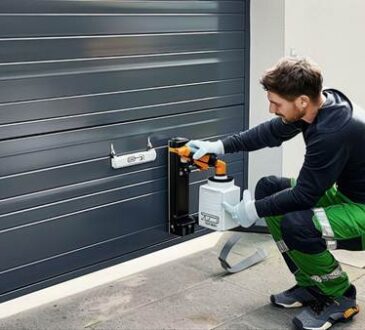
In 2025, Impact Resistant Windows have moved from a coastal niche to a mainstream upgrade for safety‑minded, energy‑savvy homeowners. Storms are stronger, utilities are pricier, and break‑in attempts remain a concern in many metros. The latest generation of impact glazing and reinforced frames tackles all three at once: it protects the building envelope during severe weather, deters forced entry, and trims energy waste. Backed by stricter codes and better incentives, adoption is accelerating. This article unpacks how modern systems, across vinyl, fiberglass, and thermally broken aluminum frames, including advanced European profiles from suppliers such as GEALAN, deliver resilience and measurable performance gains.
Protective benefits against storms and forced entry risks
When a hurricane or straight‑line wind event hits, the weak point in most homes is the opening. If glass shatters and the envelope is breached, internal pressure can spike, driving water intrusion and even roof uplift. Impact Resistant Windows are engineered to keep that breach from happening.
At the heart of their storm protection is laminated glass: two or more panes bonded with a tough interlayer, typically PVB (polyvinyl butyral) or a stiffer ionoplast (SGP). Even if the outer pane cracks under flying debris, the interlayer holds fragments in place so the opening stays closed. In lab testing (e.g., ASTM E1886/E1996 and Miami‑Dade/TAS protocols), units are struck by a large timber projectile and then cycled under thousands of positive/negative pressure pulses to simulate storm conditions. Passing those tests indicates a product that’s designed to keep wind, rain, and debris out when it matters.
Forced entry resistance is a quiet but significant advantage. Laminated glazing takes sustained, noisy effort to penetrate: it doesn’t shatter into a pass‑through opening like ordinary tempered glass. When coupled with robust frames and multi‑point locks, many units meet recognized forced‑entry standards (such as North American FER protocols or, in Europe, RC2/RC3 classifications under EN 1627). The practical effect: opportunistic attempts are deterred, and determined intrusions take longer, time most intruders don’t have.
Other protective benefits that homeowners value in 2025:
- Continuous occupancy during storms: no scrambling with shutters: occupants can shelter in place more safely.
- Better water management: stronger frames, improved seals, and pressure‑balanced weeps reduce wind‑driven rain intrusion.
- UV and noise reduction: laminated glass blocks up to 99% of UV and noticeably cuts low‑frequency noise, useful on busy streets and in flight paths.
In regions governed by the Florida Building Code’s HVHZ or Texas Department of Insurance coastal guidelines, impact‑rated windows also streamline compliance and can help unlock insurance discounts when the entire opening protection package is verified.
Unique design elements that strengthen impact resistant windows
Impact Resistant Windows look familiar from a distance, but their internals are different. Several design cues separate high‑performing models from ordinary units.
Laminated glazing stacks
- Multi‑layer construction: Common makeups include a heat‑strengthened outer lite, a PVB or ionoplast interlayer (often 0.090–0.120 inches combined), and an inner lite that may be annealed or tempered. Higher‑risk zones may specify thicker interlayers or multiple interlayers.
- Edge integrity: Warm‑edge spacers and dual‑seal systems protect the insulated glass unit (IGU) from moisture ingress while maintaining structural adhesion.
- Coatings with purpose: Low‑E coatings manage solar gain and U‑factor. Some interlayers incorporate solar‑control or acoustic properties, enabling security and comfort in a single package.
Frame engineering and reinforcement
- Material choices: uPVC/vinyl, fiberglass, and thermally broken aluminum each bring distinct strengths. Vinyl and fiberglass excel at thermal performance: modern aluminum with wide thermal breaks delivers slim sightlines without the old heat‑loss penalty.
- Multi‑chamber profiles: Advanced vinyl systems, such as those supplied by GEALAN, use multi‑chamber designs to improve rigidity and reduce heat transfer. Steel or composite reinforcements in sash and frame increase resistance to racking under impact loads.
- Corner strength and anchorage: Fully welded corners, screw‑retained glazing beads, and robust installation anchors (at jambs, sill, and head) help transfer impact forces into the structure. In coastal installs, continuous sill support and proper substrate fastening are non‑negotiable.
Hardware and glazing methods
- Multi‑point locking: Engages the sash at several points, resisting prying and distributing loads. Hinges and keepers are typically upsized compared to standard residential hardware.
- Dry vs. structural glazing: Many systems use dry glazing with compression gaskets for serviceability. Others add structural silicone or adhesive‑bonded approaches (e.g., static dry glazing concepts) to stiffen the sash and improve load transfer.
- Gasket and seal upgrades: EPDM and advanced co‑extruded seals maintain elasticity and compression set, preserving water and air tightness over time.
The result of these design choices is a window that doesn’t just pass a single lab test, it maintains structural integrity, air/water tightness, and smooth operation across years of thermal cycling and hard weather.
Energy performance advantages in reducing utility costs
A common misconception is that impact windows are only about safety. In 2025, they’re also serious energy performers.
- Lower U‑factors: With advanced low‑E coatings, gas fills (argon or krypton), and multi‑chamber or thermally broken frames, many impact‑rated units reach U‑factors in the 0.20–0.30 range, depending on climate package. That’s competitive with non‑impact premium windows.
- Tighter envelopes: Heavier sashes, better hardware, and higher‑grade weatherstripping often mean lower air infiltration, helping HVAC run fewer, longer cycles with less humidity creep in warm climates.
- Solar control where it counts: In the Sun Belt, tuned SHGC values (often 0.20–0.30) cut cooling loads, while in mixed or northern zones, selective low‑E can admit winter sun without sacrificing insulation.
- Thermal bridging minimized: Warm‑edge spacers and reinforced frames reduce edge‑of‑glass heat loss, a frequent weak point in older assemblies.
What does this mean on bills? Actual savings vary by climate, orientation, and what the windows replaced, but independent modeling commonly shows 8–15% reductions in heating/cooling energy when upgrading from single‑pane or builder‑grade double‑pane units to high‑performance, impact‑rated windows. Add in UV blocking (less interior fading and lower cooling spikes) and lower air leakage, and the comfort gains are immediately noticeable, fewer drafts, quieter rooms, more stable indoor temperatures.
Policy helps, too. In the U.S., ENERGY STAR Version 7.0 criteria tightened in recent years, and qualifying window replacements can be eligible for federal tax credits (under Section 25C, up to $600 annually for windows that meet efficiency thresholds). Some states and utilities layer additional rebates, making the efficiency side of an impact upgrade more affordable.
Why adoption of impact resistant windows is rising in 2025
Several forces are converging in 2025 to push Impact Resistant Windows into the mainstream:
- Climate and risk awareness: More homeowners are experiencing severe wind events outside traditional hurricane corridors. Resilience is no longer “a coastal thing.”
- Stricter codes and approvals: Jurisdictions continue to strengthen wind‑borne debris and water intrusion requirements. Impact‑rated windows with recognized approvals (e.g., Miami‑Dade NOA, Florida Product Approval, TDI listings, or NAFS/Design Pressure ratings) simplify compliance for builders and remodelers.
- Insurance incentives and underwriting pressure: Insurers increasingly reward verified opening protection and penalize homes without it in high‑risk zones. Discounts and the prospect of fewer claims make upgrades compelling.
- Real energy economics: Higher electricity rates and heat waves have made efficient glazing more valuable. When one product improves resilience and lowers HVAC use, the calculus changes.
- Better aesthetics and options: Today’s impact windows offer slim profiles, color‑fast finishes (e.g., co‑extruded color surfaces on vinyl like GEALAN’s acrylcolor‑type finishes), and large sizes with tested performance. They don’t telegraph “storm window.”
- Supply‑chain maturity: More fabricators now specialize in impact assemblies, reducing lead times and narrowing the price premium versus standard high‑performance windows.
Put simply, the category now solves multiple homeowner priorities, safety, security, comfort, efficiency, in a single, code‑aligned package.




